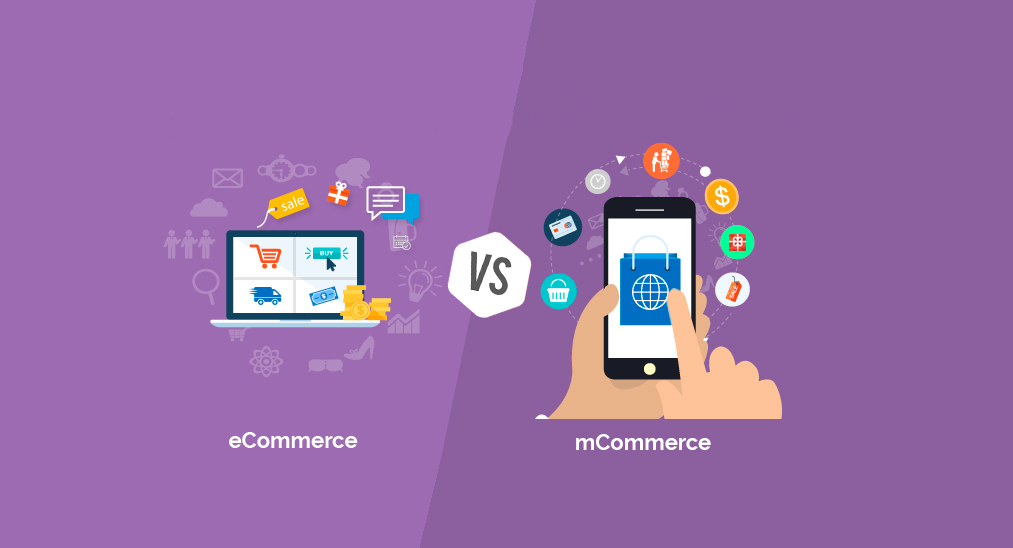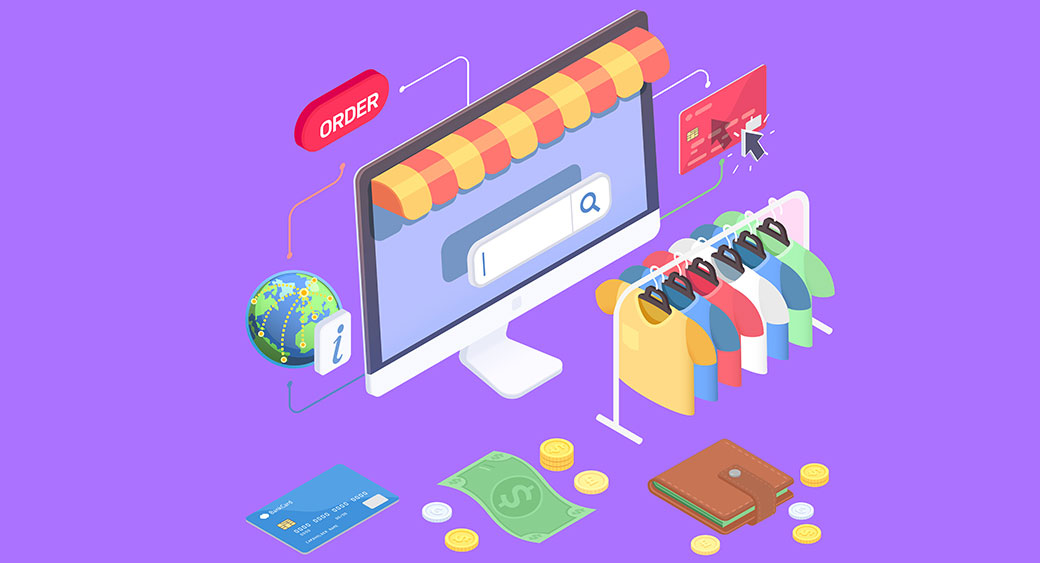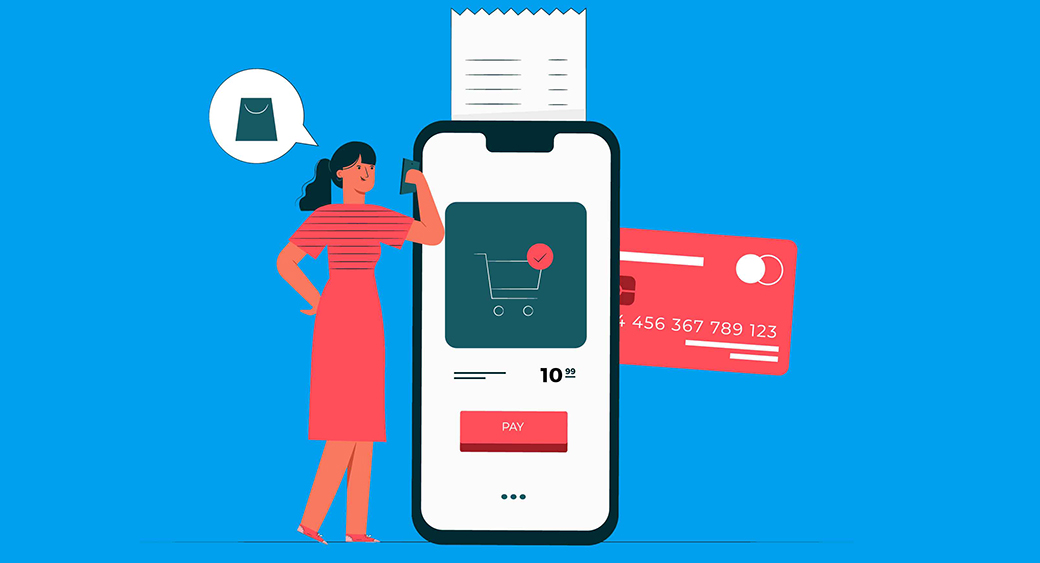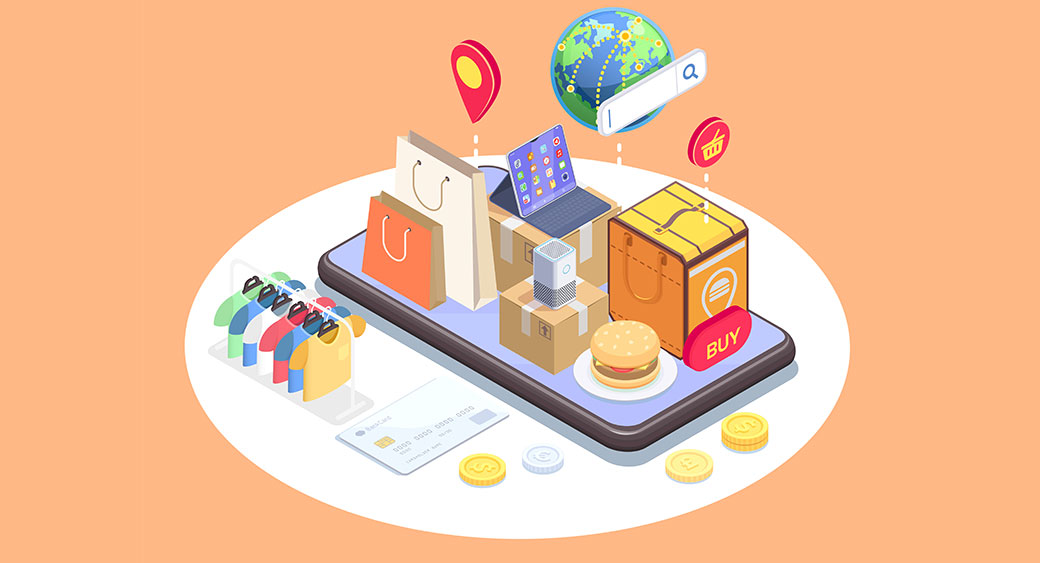What is eCommerce vs mCommerce Really All About?
Today, the world is moving toward convenience, and thus the topic of eCommerce vs mCommerce is gaining much relevance. But what are eCommerce and mCommerce, then? eCommerce or Electronic Commerce refers to the manner of selling and buying goods and products, where the transaction occurs electronically through the internet. mCommerce or Mobile eCommerce, on the other hand, is an extension of eCommerce, but the transaction occurs via a mobile device such as a smartphone.
Only a few decades ago, there was no option to go inside a physical store and make a purchase. Now, 57 percent of people opt to do their shopping online thanks to the internet. Naturally, the overwhelming fondness for shopping online is due to greater convenience. So, as the years go by, more and more people shop online.

Mobile Commerce
Mobile commerce lets users access shopping platforms online via the web without using a desktop. M-Commerce examples are virtual marketplace apps, in-app purchases, and mobile banking, like Samsung Pay, Amazon mobile application, or Apple Pay. The percentage of respondents who purchase something via the web weekly or more often adds five points yearly. Moreover, the share of consumers who never shop online dropped to three percent.
Electronic Commerce Explained
eCommerce means making purchases, and selling products, goods, or services over the internet. Money transactions, funds, and data also are considered eCommerce. The transactions could be performed in four ways, namely, B2B or business to business, B2C or business to customer, C2C or customer to customer, and C2B or customer to the business.
eCommerce examples include online shops such as 3dcart, Amazon, Flipkart, Shopify and eBay, wholesaling and warehousing, drop shipping, manufacturing, and white labeling are also examples of successful eCommerce solutions. of successful eCommerce solutions. It was predicted that by this year, the retail eCommerce market worldwide could reach up to $27 trillion.
eCommerce vs mCommerce
Although mCommerce and eCommerce have the same objectives and goals for making online purchases, the two have blazing differences. Thus, when you search online, there these words always appear eCommerce vs. mCommerce. Let’s check out these differences:
More Mobility
Typically, activities in eCommerce are done with desktop computers or laptops; that’s why users need a place to do transactions. With mCommerce, it implies the use of mobile devices to conduct business whenever, wherever, as long as there is internet access with just a few screen taps.
Reachability of eCommerce vs mCommerce
Due to the portability of mobile devices, each mobile commerce is far broader than electronic commerce. Retail businesses could reach users wherever they may be located, allowing the chance to get more out of mCommerce because of its broader audience reach.
Tracking Location
With location tracking, eCommerce vs mCommerce also spells out differences. There is limited location tracking with electronic commerce due to the non-portable devices. With mobile commerce, however, tracks and identifies users’ location with technologies, including Wi-Fi and GPS, among others.
Thus, mCommerce provides personalized recommendations and location-centric content. Businesses could offer customized discounts to the target audience in a particular setting via notifications.
Convenient Transactions
With mobile commerce, people could do transactions anywhere with an internet connection via their smartphones, with just a few taps on the screen. Electronic commerce needs a computer to do transactions.
eCommerce vs mCommerce Security
In the case of electronic commerce, the most common form of payment is via credit cards. Consumers are still wary of sending credit card numbers and information online. M-Commerce also has biometric authentication via retina scans, fingerprints, and face identification.
The Pros Of Electronic Commerce To Consumers
Here are the reasons why more and more consumers are turning to electronic commerce.

The convenience of eCommerce vs mCommerce
Customers can make purchases of products anywhere in the comfort of their homes or offices via the web. Sometimes people are restricted from shopping due to some circumstances, such as bad weather. eCommerce is a convenient way of purchasing products and services without physical constraints.
Great Selection Of Goods And Services
Through the internet, eCommerce enables customers to choose a service or good from any vendor they like anywhere in the world. In a brick-and-mortar store, vendors could only stock limited products due to space constraints. Virtual stores allow a business to stock as many products as possible without inventory costs. Thus, the business provides plenty of choices for customers.
Time-Saving
Saving on time is one of the significant benefits of online shopping. The time it takes to choose, purchase, and pay for online products takes no more than fifteen minutes. Products are delivered to customers’ doorsteps in just a week, saving delivery time considerably.
Sufficient Information
The main vehicle for doing business transactions is the internet. Customers could look for product information, make price and benefits comparisons, and evaluate value before buying. Via the internet, customers could get their queries clarified and could keep tabs on the status of their deliveries. If doubts arise, consumers could quickly contact the business via the web.
Great Savings
The expense of having a middleman generally falls on consumers. In electronic commerce, there is no need for a business to hire middlemen, and thus customers are free from shouldering the cost. To attract customers and stay on the competitive edge, businesses offer more affordable products and services.
The Pros Of Mobile Commerce To Consumers
Do you want to know how mobile commerce can boost your sales? Keep on reading the post and find out the primary benefits.
Push Notifications in eCommerce vs mCommerce
The notifications are delivery systems that bridge the gap between an enterprise and its prospective customers. Notifications are more prompt in delivering offers and reaching the audience since customers carry their mobile devices anywhere they go.
Instant Contact With One-Step Calling
Instant contact helps customers instantly reach a business quickly. One-click calling feature live chat assistance help desk that is toll-free benefits consumers, via boosting accessibility.
Complete Access
Providing access to customers is the key to business success. Offering multiple communication channels help customers solve their problems and find the right products and services in real time. Mobile apps are gateways enabling consumers quick access to information, get instant replies to queries. Everything that the customers need, from shopping convenience to support service, could, on the other hand, be in a compact manner.
In-App Payments
Allows customers to pay within the application to avail of more personalized and premium offerings or to purchase application add-ons. These transactions don’t require third-party payment gateways and are hosted by a particular platform itself.

Android users, for instance, could pay via Google Wallet. iOS users, on the other hand, could pay through Apple Pay. Another concept, the mobile wallet, allows customers to maintain a prepaid account that could be debited for purchase, thus adding more convenience.
Tracking location
Consumers consider location tracking notifications to be more personal, and they enjoy 50 percent higher open rates. Location tracking furthermore helps provide immediate aid to consumers navigating directions or help find the nearest transportation service and more.
How Ecommerce and M-Commerce Could Make Business Easier
Regarding how to make business easier, it will naturally come down to eCommerce vs mCommerce. Both could actually make business processes much easier. Take a look at these items:
- Website and mobile app are more affordable to maintain compared to a brick-and-mortar store.
- Personal engagement with direct notifications on offers, discounts, and new products made possible.
- Better reach to a wider audience, which helps lower the costs of marketing.
- Better insights about customers could be fetched through leverage data on customers’ behavior, buying patterns, abandonment rates, conversion rates, session rates, and bounce rates, among others.
- Mobile commerce helps an organization understand user preferences a whole lot better, and thus they could offer tailor-made products.
- Fewer inventory hassles since available products could be viewed online via synching in the clock and the app in real-time
- Leveraging various social media platforms for discounts, promos, announcements, and sales and reaching more consumers.
Why Electronic Commerce and Mobile Commerce Now?
Digital commerce is an umbrella term that includes electronic and mobile commerce. Again, because there are particular differences between the two, there often is the term eCommerce vs mCommerce. Nonetheless, coming from the same umbrella term, both solutions provide speed, convenience, and flexibility that are not always available via brick-and-mortar or face-to-face transactions.
Buyers genuinely appreciate the ability to choose, make orders, or monitor the delivery status of products anytime, anywhere. Given the growing appetite of buyers for convenience and speed, the explosion of the popularity of digital commerce comes as no surprise. And even as mCommerce continues to grow, eCommerce is not disappearing. It has been around for two decades now and is expected to generate billions and billions of online sales in the United States and the whole world.
Omnichannel Selling
While there would always be eCommerce vs mCommerce, the two could actually be used for Omnichannel selling. Combining the two firepowers provides suppliers a flexible way of dealing with the B2B market change. Manufacturers and distributors implement Omnichannel sales to sell to consumers in as many possible ways.
A robust Omnichannel strategy includes the online channel, which, of course, is comprised of eCommerce and mCommerce. Suppliers discovered success in optimizing in-person sales by providing their representatives with mobile order writing tools and automating transaction sales appointment elements previously and boosting the strategic value level they can provide to the clientele.
User Experiences of eCommerce vs mCommerce
Managers and marketers usually look at digital retail when it comes to broad statistics. They want to check out how many visitors the mobile website has and how many clicks were derived between hours. On the consumer’s side, however, things are different. Every shopping experience is personal because it consists of users with personal devices, such as smartphones or tablets.

This is the difference the eCommerce vs mCommerce lay. A desktop uses a full set of HTML 5 features and a huge screen. Meaning that there is a lot of space and functions to play with. The opposite is true with mobile devices.
There is a limited space to work with. Thus the focus is on making minimalistic experience which doesn’t have anything unnecessary in them. It’s a no-brainer that smartphones and tablets drive much more traffic compared to desktop computers. This is because most people rarely use PCs, and many others do not even have personal computers. While this may seem odd to some because they spend a lot of time on their desktops, the statistics speak for themselves.
This means that when a person sits down to make an eCommerce purchase from his or her desktop, he or she has a plan and not just use the computer by accident. In mCommerce, consumers have less specific intent and plenty of time to browse. With eCommerce, you could freely show users as much content as you want without limits, thus creating deeper experiences.
With mCommerce, there is not much engagement right away. Rather, there would be plenty of micro-touches in the form of CTA clicks, ad views, and a whole lot more. Meaning that you have to create frequent experiences, an entirely different game from electronic commerce.
eCommerce vs mCommerce Future
With the great influence of technology in people’s day-to-day lives and activities these days, it’s easy to get a distorted visual image of what the future would be with eCommerce vs mCommerce. The future for businesses could turn out great with both technologies. Check out the following.
- Leveraged drone services for faster delivery
- Same-day delivery is possible with digitization in logistics
- VR and AR enable virtual changing rooms and help consumers make better purchasing decisions
- Social-selling would be integral parts of mCommerce and eCommerce
- More efficient data analytics tools with Big Data and improved customer experience
- Reach to various far-reaching geographical locations would be possible
- Conversational commerce or personal assistants in the form of chatbots by AI would influence users’ buying decisions.
Last Words about eCommerce vs mCommerce
Are you looking at the eCommerce vs mCommerce trends since their inception, one thing is clear—they would not be concluded anytime soon. Future implementations have begun making their way in the current commerce ecosystem. Businesses could go digital by leveraging eCommerce and mCommerce application development.




Leave a Reply